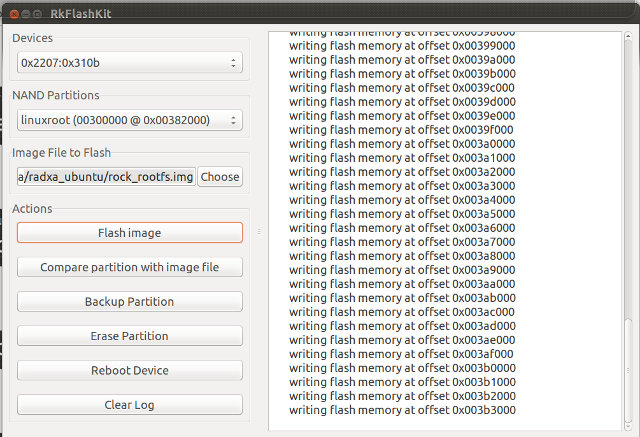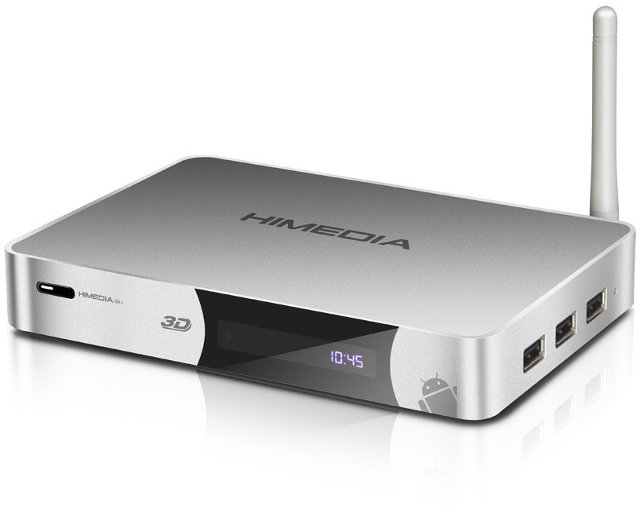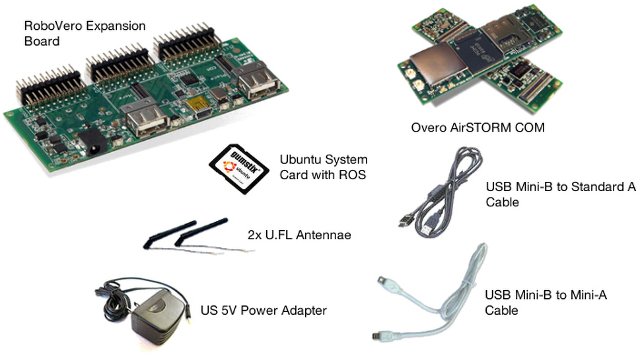The first release of the year, Linaro 14.01, is now out with Linux Kernel 3.13 (baseline), Linux Kernel 3.10.28 (LSK), Android 4.4.2, and Ubuntu Linaro 14.01. The most important part of this release is support for Arndale Octa, which makes big.LITTLE processing code available to a low cost platform. Android 4.4.x is now on par with Android 4.3 in terms of support. Linaro has also decided to provide quarterly stable released with GCC, and Linaro GCC 4.7-2014.01 is the first quarterly stable release with the next one planned with Linaro 14.04. Here are the highlights of this release: Linaro Stable Kernel (LSK) 3.10.28-2014.01 with latest version of GTS patch set for big.LITTLE, and Android support Linux Linaro 3.13-2014.01: gator version 5.17 updated linaro-android-3.13-merge topic by John Stultz, the “Revert “PM / Sleep: Require CAP_BLOCK_SUSPEND to use wake_lock/wake_unlock” patch included uprobes v4 updated big-LITTLE-pmu topic from ARM Landing Team (LT) updated […]
Getting Started with Raxda Rock – How to Generate and Flash Ubuntu Saucy Server and Desktop Images
I’ve already written a guide showing how to build and install Android in Radxa Rock. Today I’m going to build the Linux kernel, generate a Ubuntu server images based latest Ubuntu Linaro server release, flash the image to the NAND flash, and show how to install LXDE or XFCE desktop environment. If you are just interested in installing one of the latest supported images, you can download Android, dual boot (Android/Ubuntu), Ubuntu ALIP, and Router images for Radxa Rock @ http://dl.radxa.com/rock/images/, and skip “build” and “generate” instructions, and just follow the flashing instructions below. All steps in this tutorial will be done in Ubuntu 13.10, and lots of the instructions below follow hwswbits blog and Ubuntu Radxa Wiki. Build the Linux kernel Let’s start by building the Linux kernel. I’m assuming you’ve already install development tools in Ubuntu (e.g. apt-get install build-essentials). You can refer to the list at the beginning […]
Top 10 Posts of 2013 and Stats on CNXSoft Blog
This is the last day of the year, and just like in 2012, I’ll look back on the main trends of this year, post a list of the top 10 posts of 2013 on cnx-software.com, and add some fun stats about the site and my visitors. 2013 has been the year of quad core media players and mini PCs, especially those based on Rockchip RK3188, XBMC is now featured in many Android STBs, “big.LITTLE” and “Octa-core” have been the buzz words on the application processor front, Google has entered the HDMI TV sticks market with the ChromeCast, and is competing with Miracast / DLNA TV dongles, we’ve gotten more and more low cost Linux development boards, crowdfunding has almost gone mainstream, and the Internet of things has started to take off thanks to new technologies such as Bluetooth Low Energy. I’ve compiled the list using data from Google Analytics, filtered […]
Linaro 13.12 Release with Linux Kernel 3.13, Android 4.4, and Ubuntu Saucy Salamander
Due to the end of year celebration, Linaro release is a little earlier at this time, and Linaro 13.12 has already been released with Linux Kernel 3.13-rc3 (baseline), Linux Kernel 3.10.24 (LSK), Android 4.4, and Ubuntu Linaro 13.12, which for the first time is based on Ubuntu 13.10 Saucy Salamander. Other interesting development include an initial arm64 Ubuntu saucy rootfs (that one?), work to support octa-core 4x Cortex A53, 4x Cortex A57 SoCs, an Android 4.4 KitKat LEB for the Galaxy Nexus, and ARMv8 LSK and Nexus7_2013-AOSP builds have been setup and Android can be now built using llvm-clang toolchain with the related patches submitted to upstream. On a related note, there are also some Midway and Highbank engineering build images for Calxeda server processors, which may not be that useful going forward, as unfortunately the company has just closed door after running out of cash. Here are the highlights of this […]
Linaro 13.11 Release with Linux Kernel 3.12 and Android 4.4
This release includes Linux Kernel 3.12 (baseline), Linux Kernel 3.10.20 (LSK), Android 4.4 for the first time, and Ubuntu Linaro 13.11 (still based on Raring). Beside Android Kit Kat support, other noticeable updates include initial documentation for LAVA, and further work on ARMv8 support. Here are the highlights of this release: Android Engineering Android 64-/32-bit updated to 4.4 KitKat Fastboot/UEFI – Created Fastboot app design Builds and Baselines Linaro Stable Kernel 3.10.20-2013.11 released – Includes an updated big.LITTLE MP patchset Linux Linaro 3.12-2013.11 released: gator version 5.16 (same version as in 13.10 release) updated big-LITTLE-pmu, iks, iks-cpufreq, and interactive-gov-updates topics from ARM LT updated basic Capri board support from Broadcom LT (generic phy support for USB, watchdog, updated bcm_defconfig) updated big endian topic updated topic to support K3V2 board from Hisilicon LT updated Versatile Express patches from ARM LT vexpress64 support (updated FVP Base model files, added support for FVP […]
HiMedia Q5II Android STB Features HiSilicon Dual Core SoC, a 2.5″ SATA HDD Bay, and Supports XBMC Hardware Decode
Many Android set-top boxes are based on application processors mainly targetting tablets such as Rockchip RK3188, and media capabilities including video quality, and audio pass-through are not always optimal, or not working at all. On the contrary, HiMedia Q5II, an Android 4.2 media player, is powered by HiSilicon 3718 (or is it Hislicon 3716C V200?), a dual core Cortex A9 SoC designed specifically for media players. It also features an external SATA slot, HDMI and composite video output, optical and coaxial S/PDIF, and I’ve just found out the company worked on making video hardware decoding work with XBMC. HiMedia Q5II specifications: SoC – HiSilicon Hi3716C V200 dual core ARM Cortex A9 @ 1.6GHz + ARM Mali-400MP4 GPU. N.B.: HiMedia indicates the processor is Hi3718, but most resellers give specifications with a dual core processor called 3716C… Hi3718 is not listed at all in HiSilicon website, and Hi3716C is a single […]
Gumstix Announces Solution Kits for their CPU Modules and Boards
Gumstix has recently unveiled several solution kits featuring their Overo and DuoVero Computer-on-Modules (CoMs), Pepper single board computer, and several expansions boards, together with required accessories, and software packages, in order to help their customers getting started more easily. All these solutions are based on Texas Instruments OMAP3, OMAP4, and/or Sitara processors, and run Linux (Ubuntu or Yocto), and sometimes Android for the kits with displays. The solutions kits target 6 different types of applications and/or markets: Robotics Robotic Development Kit (Pictured above) with one Overo AirSTORM CoM (OMAP3703), and RoboVero expansion board. The kit is better suited for motor control applications. Mobile Robotic Development Kit with one Overo AirSTORM CoM, and Turtlecore expansion board to be used with iRobot Create. The kits ship with a Linaro (Ubuntu for Overo) system card and Robot Operating System (ROS) pre-installed. Handhelds 3.5″ Handheld Development Kit featuring Overo AirSTORM CoM with Alto35 cutomizable […]
Linaro 13.10 Release with Linux Kernel 3.12 and Android 4.3
Linaro has just posted a blog entry to announced Linaro 13.10 was available for download. This is normally supposed to occur on the last Thursday of the month, but it’s possible the release occurred on scheduled, and the blog post was late, or it may have been delayed because of Linaro Connect US 2013. You can access a summary of the event together with slides and videos of the sessions and keynotes when available. This release includes the Linux Kernel 3.12-rc5 (staging), Kernel 3.10.14 (LSK), Android 4.3.1, and Ubuntu Linaro 13.10 (still based on Raring). Android has been ported and updated to 4.3.1 from AOSP, and the OS can now boot using UEFI. More work has been done on ARM 64-bit (aka ARMv8 or Aarch64) for Android, the Linux kernel, and tools such as uprobes, o-profile, and ftrace. Some new hardware platforms I may have missed before have popped up […]







